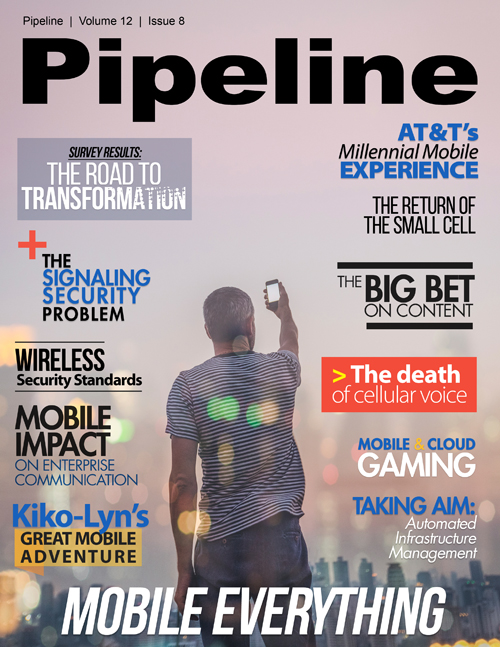The Big Bet on Content
It’s not AT&T’s only recent content play. In 2014, the carrier announced an agreement with the Chernin Group, a privately held media holding company, in which the companies would invest a combined $500 million to acquire, invest in, and launch over-the-top video services. The joint venture, called Otter Media, has been active. It recently invested $22 million in one of its brands, Ellation, the parent company of anime video service CrunchyRoll (which delivers Japanese programming like Naruto Shippuden and Sailor Moon to western fans and sports 20 million users, including 750,000 paying subscribers).
Meanwhile, AT&T’s key adversary, Verizon, is hard at work placing its own huge bets on content. First, it made a series of acquisitions designed to better prepare itself to deliver content: content delivery network Edgecast, encoding company Uplyn, and perhaps most notably, interactive TV platform OnCue which it acquired from Intel. Then it made the big leap by picking up AOL in a $4.4 billion deal last spring, a move most think was all about picking up AOL’s advertising platform.
All of these pieces have gone into the pot, and the resulting stew is Verizon’s Go90 service, an over-the-top play designed to reach customers well outside of Verizon’s usual subscriber base. AOL’s advertising platform—One—brought in a reported $1.8 billion in revenue in 2014, and if those numbers persist (and Go90 can find an audience), Verizon could be well-positioned to pump up its overall income with the help of new revenue streams.
What’s more, the carrier is working very hard to look at video streaming and the resulting ad revenue in very innovative ways. Verizon hopes to reach new levels of precision when it comes to customer targeting, and sees an opportunity to reinvent ads and the way that customers experience and interact with them. These are not new promises, but the maturity of the tools at hand and the carrier’s ownership of the value chain mean new possibilities to bring these promises to fruition.
Vertical Integration
Verizon is also demonstrating some long-range thinking for Go90 when it comes to geographical reach. According to Variety, AOL CEO Tim Armstrong told the audience at Recode’s Code/Mobile conference in October that Verizon wants to become the largest mobile media technology company, which will involve reaching beyond its own network and possibly beyond the US border. He mentioned the possibility of developing partnerships with international carriers, or even white-labeling Go90 in other countries.
This push to operate OTT content distribution channels that distribute content independently from the carrier’s other business is a new flavor of an older story. As Bloomberg’s Alex Sherman pointed out in a piece last summer, cablecos were all about so-called “vertical integration” in the ‘80s and ‘90s. Time Warner owned TWC, Time, TBS, TNT, and lots more. Tele-Communications (aka TCI) owned interests in Starz, Discovery Channel, and others. Cablevision owned not only content networks, but also Madison Square Garden. They could theoretically host an event in one of the nation’s most notable venues, broadcast that event, and own every part of the value chain.
That model failed, largely because U.S. cablecos (especially at that time) were regional rather than national. Furthermore, the ability to deliver content over-the-top didn’t exist at the time, further limiting the value of those channels. But regions don’t matter nearly as much in the OTT model, and providers are ready to take another shot.
Traditional partners are ready to come along for the ride. For example, Cisco picked up cloud-based OTT video platform 1 Mainstream late last year. In a company blog post about the deal, Cisco pointed out that global cloud traffic is set to quadruple by 2019, and 1 Mainstream will allow Cisco to better assist its customers in delivering new services faster.
With terrestrial competitors like Comcast (and its recently acquired NBC Universal assets) well positioned to deliver content that subscribers want, now is a great time for mobile carriers to leverage their networks—which meet customers where they want to be in an increasingly mobile society—to deliver and monetize content in a new way. These are big bets on content that don't show signs of slowing and we’ll be watching in 2016 to see how they pan out.



















